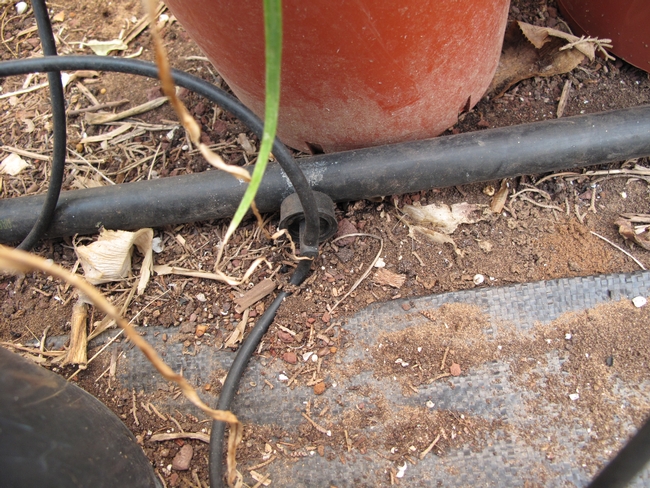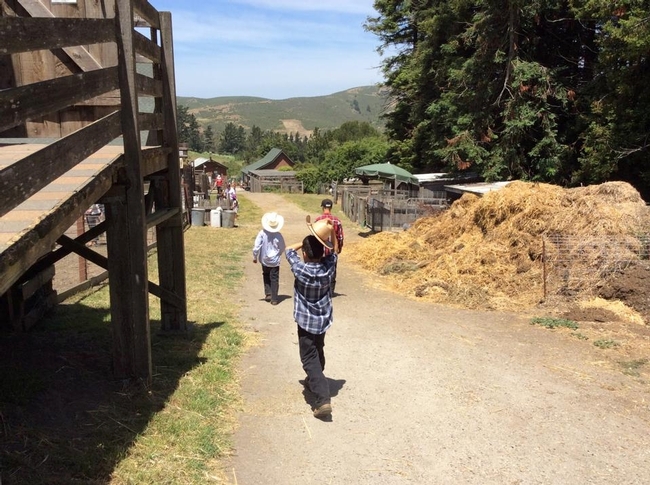From the UC Blogosphere...
Human behavior patterns influence water conservation
"There is a lot of collective action involved in getting individuals and farmers and water districts to come together to reduce water use," said Lubell, who is also Director of the Center for Environmental Policy and Behavior at UC Davis.
Lubell, whose research focuses on human behavior and the role of governance institutions in solving environmental collective action problems and facilitating cooperation, is particularly interested in watching the conservation efforts prompted by the California drought unfold. "It is definitely a good lab to study cooperation problems or observe them in action," he said.
The difficulty for California is akin to the classic "tragedy of the commons," in which people behave in their own self-interest even when contrary to the best interests of a whole group.
"People are being asked to make an individual sacrifice, but the costs and benefits are experienced by a lot of other people," Lubell said. "People tend to not do the behaviors that make everybody collectively better off."
The solution, Lubell said, is taking a multifaceted approach to encouraging water conservation, including water prices, penalties for not conserving, and influencing social norms. He said social norms are crucial, but they are not established overnight. And the norms can change again when conditions change.
"There will be some behaviors that stick. Some people might put in some irrigation changes where they won't go back and put lawn back in right away," Lubell said. "But short term changes will unstick once it starts raining again. We know the psychology of water use, and people very quickly forget the drier years."
Bring on the Bugs!
Insects populate the earth and they're also populating the 140th annual Dixon May Fair (May7-10). Sharon Payne,...
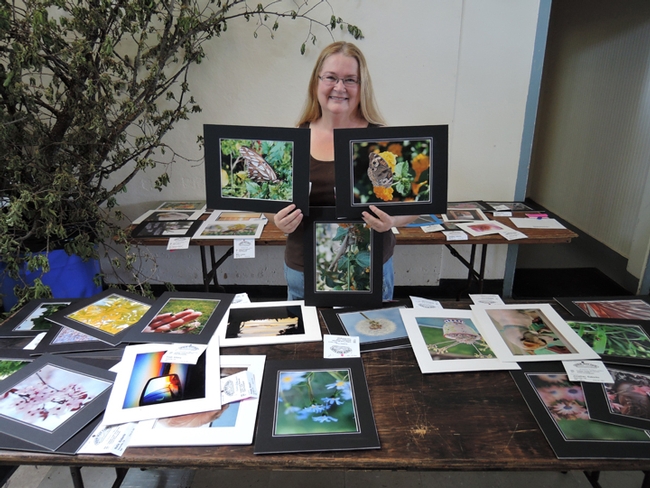
Dixon May Fair Youth Building superintendent Sharon Payne with some of the insect photographs taken by youth exhibitors. (Photo by Kathy Keatley Garvey)
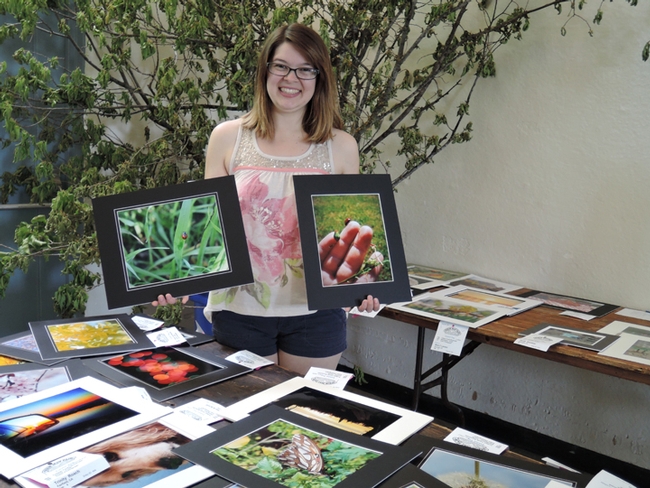
Lady beetles, aka lady bugs, are popular images at the Dixon May Fair. Dixon May Fair Youth Building assistant superintendent Julianna Payne holds two of them. (Photo by Kathy Keatley Garvey)
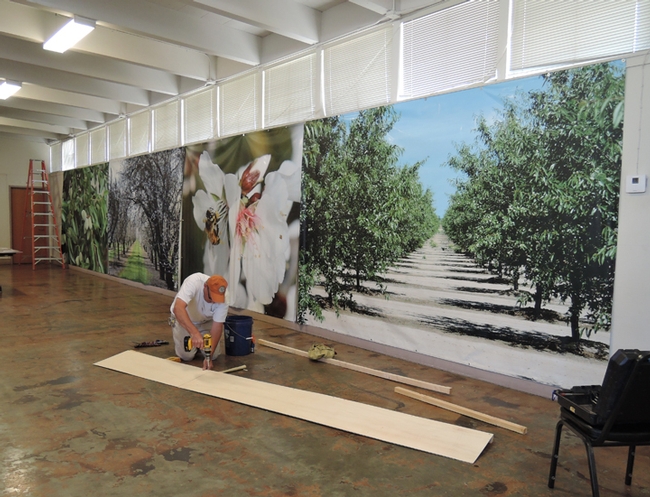
Chris Conklin works on the agricultural display in Madden Hall, Dixon May Fair. (Photo by Kathy Keatley Garvey)
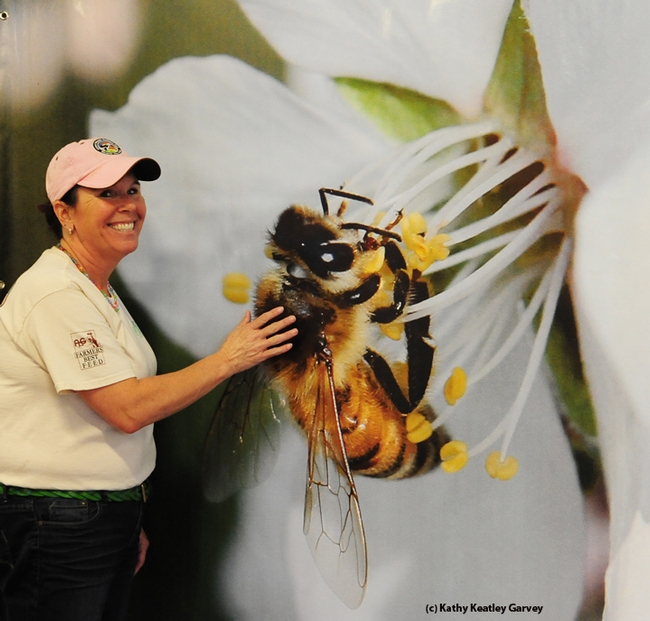
Dixon May Fair chief administrative officer Patrica "Pat" Conklin stands next to a photo of a bee pollinating an almond blossom. (Photo by Kathy Keatley Garvey)
Daily Life For Master Gardeners
Sweet Peas By Andrea Peck "The odor of the sweet pea is so offensive to flies that it will drive them out of a...
The Buzzingham Palace
"All the buzz" in England is the birth of a new member of the royal family, Her Royal Highness Princess Charlotte...
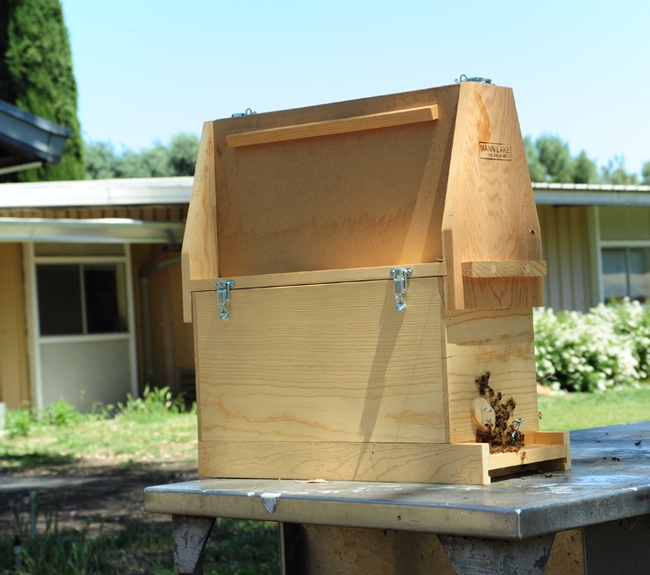
This bee observation hive, named "The Buzzingham Palace," will be on display Thursday through Sunday, May 7-10 at the Dixon May Fair. (Photo by Kathy Keatley Garvey)
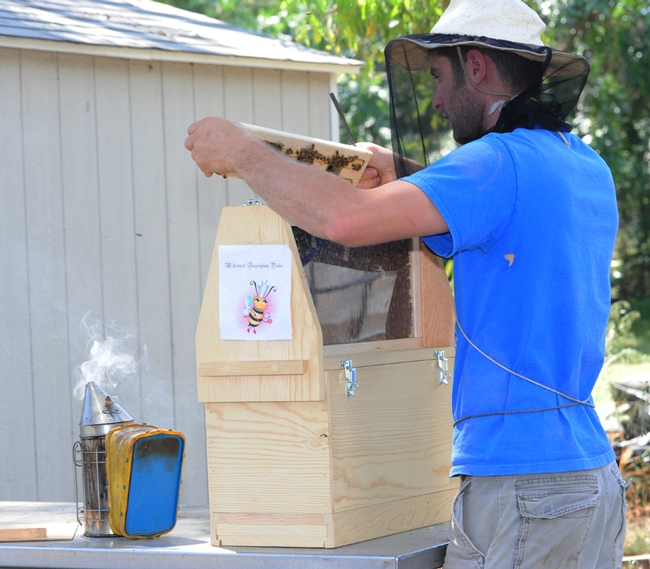
Staff research associate Billy Synk of the Harry H. Laidlaw Jr. Honey Bee Research Facility, UC Davis, opening the Buzzingham Palace. (Photo by Kathy Keatley Garvey)
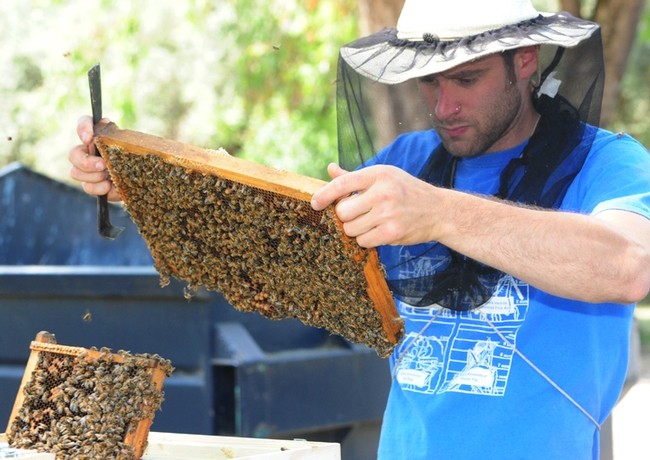
Staff research associate Billy Synk of the Harry H. Laidlaw Jr. Honey Bee Research Facility, UC Davis, checking the frames. (Photo by Kathy Keatley Garvey)
Elkus Ranch seeks to expand
The UC Agriculture and Natural Resources (UC ANR) Elkus Ranch Environmental Education Center near Half Moon Bay is making plans to expand its conference center to offer more flexible facilities for conventions and team-building exercises, reported Julia Reis in the Half Moon Bay Review.
The ranch was donated to UC in 1975 and hosts more than 6,000 youth and adults from all over the San Francisco Bay Area each year. UC ANR presents 4-H programs at Elkus Ranch for children from preschool through high school to explore the processes of producing food and fiber, nutrition programs, community service days and special events. The site is also available for daytime retreats, meetings, workshops, weddings and other special events.
Elkus Ranch director Virginia Bolshakova send a request for qualifications to area planning firms which are due this Friday. The proposals should include potential project scope and plans for improved overnight accommodations, new field laboratory areas and new walking trails.
Program coordinator Leslie Jensen took the reporter on the tour of Elkus Ranch's facilities and shared the staff's vision for improvements. The staff envisions adding yurts for student housing or replacing or renovating the building where students currently sleep. The ranch's water system is also in need of updating and the staff wants the education center to be "greener." The study is to be completed by Sept. 1.



